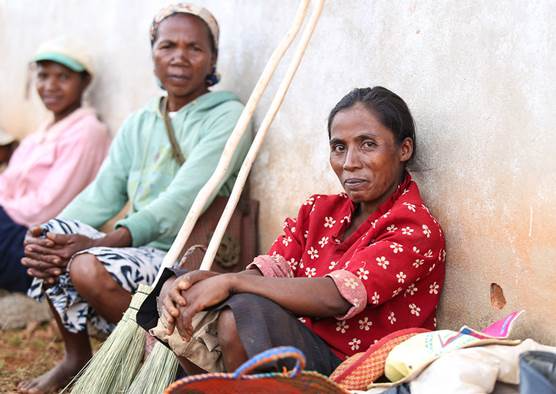Leveraging Agriculture Insurance to Strengthen Resilience to Climatic Shocks and Improve the Agriculture Sector in Madagascar

Leveraging Agriculture Insurance to Strengthen Resilience to Climatic Shocks and Improve the Agriculture Sector in Madagascar
The climate of Madagascar favors a wide range of agricultural activity, including crop and livestock production, fishery and forestry. In addition, approximately 70 percent of the total land area is arable (FAO 2016) and the agricultural sector makes a significant contribution to the economy: at least 23 percent of the country’s GDP and 64 percent of total employment can be attributed to the sector (ILO 2020). Most agricultural production is driven by smallholder farmers, who make up about 70 percent of the farming population (FAO 2019).
However, due its geographical location and the effects of climate change, Madagascar is exposed to a wide range of natural disasters such as droughts and floods which threaten agricultural productivity, as well as cyclones such as Enawo (2017) and Ava (2018), which resulted in significant damages in recent years. In addition, limited access to inputs and financing by smallholder farmers has also contributed to declining productivity and income in recent years. According to the 2016 FinScope survey, 62% of farmers cited lack of input financing as a barrier to commercialization.
Well-designed insurance programs can help to improve farmers’ resilience, access to finance and high-quality inputs. To this end, GIIF plans to initiate a program that will support agricultural insurance market development in Madagascar. In this interview we are talking with Team Leaders, Sharon Adhiambo Onyango and Noro Aina Andriamihaja to get their views on the project in general, and on the agriculture insurance component in the country in particular.
GIIF: Sharon and Noro, could you please give us an overview of the challenges of the agriculture sector in Madagascar and the potential role the recently approved project may play in the economy and overall development?
In Madagascar, it is important to note that improved resilience to climatic and other shocks will be critical to economic growth driven by the agricultural sector. The government has established a National Disaster Risk Management (NDRM) Strategy (2016-2030) which outlines the country’s disaster risk governance framework. It also outlines a range of short, medium and long-term actions that will be taken to improve disaster risk management in key sectors, such as agriculture. These include strengthening early warning systems, emergency response measures and response capacity. The NDRM Strategy also highlights that while the government is on the right track with regard to strengthening resilience, much remains to be done.
GIIF interventions will complement the proposed government interventions: the focus will be on developing and rolling out suitable agri-insurance products in partnership with the local insurance industry, and strengthening market capacity for sustainability. GIIF’s long standing presence and global experience demonstrate that insurance companies can successfully partner with financial institutions and agribusinesses to provide holistic risk management solutions to farmers, and so the project will also facilitate such partnerships.
GIIF: Could you please share with us some highlights of the project design, the components and the expected outcome during this initial step?
As a first step and before implementation can be initiated, an in-depth diagnostic will be conducted to explore the feasibility of offering agricultural insurance to smallholder Madagascan farmers, to improve their resilience to climatic and other shocks, their productivity and their access to finance in the longer run. The diagnostic will consist of: i) agri-insurance demand and supply analysis; ii) a review of the enabling environment to provide clarity on the current and anticipated regulatory provisions regarding agricultural insurance; and iii) the identification of optimal solutions, potential partners and market constraints that can be addressed through a follow-on project.
The results of the diagnostic will be disseminated through workshops, in coordination with Madagascar's Ministry of Agriculture, Livestock and Fisheries (MAEP). The results will be used to outline the components of a potential follow-up sector development project that would implement recommended solutions in partnership with local insurers and distribution partners.
GIIF: This is indeed a significant development for the agriculture sector in Madagascar considering the WBG’s multi-dimensional support to improve sustainability, resilience, and the welfare of farmers and the most vulnerable.
We thank Sharon and Noro for their valuable insights and contribution to this piece.
To read more about the project (in French) please click here.
Photo Credit: Photo: World Bank / Sarah Farhat
